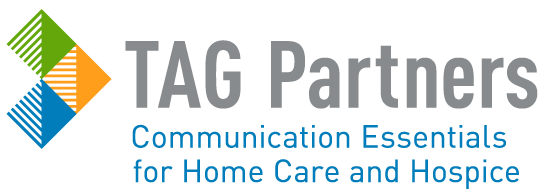Increase your physician referrals by marketing your CMS Hospice Compare Scores. There is an excellent marketing tool available through CMS that many hospice agencies are not utilizing. CMS’s Hospice Compare site provides potential patients and referring physicians with a published track record of how your agency’s performance stacks up to the competition. Physicians want to refer patients to proven hospice providers, so obviously, promoting your above average compare scores is an excellent way to boost referrals.
The Hospice Compare Scores are broken down into five categories:
General Information: Levels of Care
Conditions
Location of Care
Family experience of care
Quality of care
Your agency may not excel in all measures, but you can highlight areas where you do excel and work on the areas where your team is falling behind the national averages.
1. Let’s look at the General Information, Level of Care explanation and breakdown:
All Medicare-certified hospices are required to offer 4 levels of hospice care depending on the needs of the patient and their caregiver.
Routine home care
General inpatient care
Continuous home care
Respite care
The hospice compare level of care section provides an average daily patient census. That number can be a reflection of the level of care that an agency normally provides. Hospices caring for a smaller number of patients may not be as familiar with complex conditions that require special attention. As a result, marketing your agency’s daily patient census average can yield positive results if your daily number of patients exceeds the national average of 74.8. If your patient number is below the national average, this might be a category that you choose to omit in your print media.
2. Next is the Conditions category which breaks down patients by their condition.
This data can be especially helpful with target marketing. For instance, if your hospice sees an above average number of cancer patients then you can target oncologists and cancer treatment facility clinicians with specific print media that reflects these numbers and increase your referrals. https://www.tagwebstore.com/choosing-hospice-physicians.php
The National average of hospice patients broken down by primary medical diagnoses:
Cancer 27.3%
Dementia 21.2%
Stroke 9.4%
Circulatory/heart disease 20.8%
Respiratory disease 11.9%
All other conditions 16.1%
3. The third Hospice Compare section is Location of care:
As you know Hospice care can be provided in many locations. This hospice compare graphic illustrates the locations where your agency has provided care within the data collection period. Marketing this data is generally most helpful for agencies with an inpatient facility. The National averages of hospice care given by location:
Home 99.8%
Assisted Living Facility 76.1%
Nursing Facility 60.8%
Skilled Nursing Facility 52.5%
Inpatient Hospital Facility 31.5%
Inpatient Hospice Facility 17.0%
All Other Locations 17.6%
Reviewing your agency’s compare scores should be a routine part of your continuous improvement program. Superior patient care and satisfaction are both firm foundations to build your business on. Above average scores can translate to referrals, and we offer a referral building tool to highlight them. Visit the TAG Webstore or call us at 866-232-6477 for more information on our Choosing Hospice Flyer for Physicians and take the next step in successful Hospice marketing.




